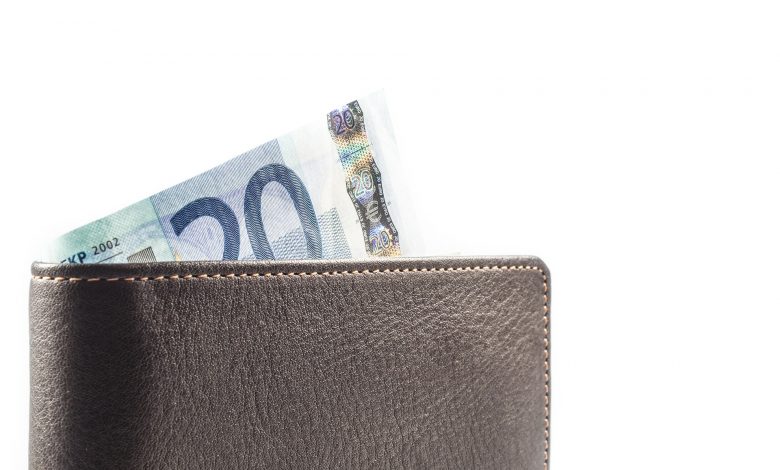5 Investing Tips for Your 20s

Having wealth in your 50s starts with sound investments in your 20s. While retirement may appear to be far off in the distance, the longer you have investments, the more substantial your portfolio will be 30 years from now. Even if you are investing small amounts that do not appear to be significant, by entering the market at an early stage in life, you can gain valuable investing insights that will benefit you when you begin to invest more substantial amounts of money. To get you started, here are five investing tips for your 20s.
1. Build an Emergency Fund
The first step you should take when considering your future investment profile has little to do with investing. But building an emergency fund should be the first step you take to ensure that you can weather any unexpected costs. There are many scenarios that are out of your control and demand dipping into an emergency fund.
You could unexpectedly get laid off from your job, get injured and have medical bills, or simply have an issue with your vehicle that you have no choice but to take care of. These costs can range from as little as a few hundred dollars to as much as many thousands of dollars. Before you begin investing disposable income in the stock market, you should build up an emergency fund both for your peace of mind and for the sake of your bank account.
Your emergency fund should cover three to six months of your expenses. You can put your emergency fund to work in a portfolio, but if so, be sure that the investments are low-risk. Financial advisors will recommend that no more than 40% of your emergency fund be invested in stocks. If you’d rather take no risk at all with your emergency fund, you can instead choose to keep your money in a high-yield savings account, which can return close to 2% annually.

2. Open an IRA
Just like an emergency fund, opening an IRA should be another step you take before really diving into the stock market. An IRA is a tax-advantaged retirement account that has a maximum contribution limit each year that is untaxed. When investing in an IRA, you can choose either a traditional IRA or a Roth IRA.
3. Pay Down High-Interest Debt
One last area to cover before getting deeper into the stock market is the question of paying down debts or investing. Any liability with an interest rate higher than 6% should be paid down before investing. If your debt is below that level, you can likely receive better returns in the market that you can use to pay off your debt later.

4. Invest in ETFs and Index Funds
ETFs (exchange-traded funds) and index funds allow you to invest in many different companies at once. For example, you can invest in a fund that tracks the S&P 500 so that whenever the S&P 500 goes up, so does your portfolio.
The S&P 500 is a collection of about 500 of the largest publicly-traded companies in the United States. Investing in an index fund saves you the time of researching hundreds of different companies and is a safe way to lock in growth for your portfolio. The historical average return for the S&P 500 is 10%. While you have to factor inflation into the equation, it’s never a bad financial decision to lock in a 10% gain.
What you must understand about that 10% gain, though, is that year-by-year there can be wild fluctuations. One year, the market may be up 15%, and the next year it may be down 5%. The key to investing is to have a long-term approach. As long as you are willing to ride out the highs and lows of the market, you will be rewarded down the line.

5. Increase Your Level of Risk Tolerance
While it is a smart idea to put a chunk of your portfolio in an index fund for more reliable results, you should also be taking another portion of your portfolio and targeting it towards higher-risk stocks. The bigger the risk, the bigger the reward. And when you are in your 20s, time is on your side. If a risky stock takes a plunge, you do not need to sell right away to get your assets back. Instead, you can wait as long as necessary for the stock to rebound. In time, these stocks can potentially reward your patience with exponential growth.
As mentioned earlier, not all of your investments should be high risk. Your emergency fund should have a much lower level of risk, and you may be saving for other reasons as well. If you are saving for a down payment on a house or wedding expenses, the money can still be invested, but be sure to know the downside of those investments before committing to them.
Bonus: Take Advantage of 401(k) Employer Match
Not everyone has access to a 401(k) or an exemplary employer match program. But if one is available to you, be sure to take full advantage of it. With a 401(k), you choose the amount of your salary that you want to contribute to the account with each paycheck. If an employer will match up to 6%, that means that, if you contribute 6% of your salary, your employer will match that amount and add it to your account. Who is going to say no to free money?
Let’s say that you want to save $1 million through your 401(k) plan with a 6% company match. If you are making $35,000 per year and expect a 7% return on investment and a 3% raise each year, you would have more than $1.2 million in your account by the time you turn 65. Without the company match, that number would be closer to $800,000.
Use a Target Date Fund
If you have a 401(k), using a target-date fund can be an excellent way to manage your risk. A target-date fund will adjust its investments to take less risk as you age. The way it works is that you pick a target date close to when you expect to retire. The fund will then automatically adjust its risk tolerance based on the number of years left until the target date.



